Betty Barclay, a renowned fashion brand, originated in the 1950s, founded by American Jonathan Logan and later acquired by German textile maker Max Berk. This brand swiftly gained popularity across Europe, attracting consumers who appreciated the blend of elegance and affordability. Significant milestones in its journey include securing worldwide trademark rights in 1972 and launching standalone stores in 2002, both of which reinforced its market presence. Over the years, Betty Barclay has diversified its offerings, introducing notable collections such as Vera Mont and Gil Bret. Today, the brand remains dedicated to quality craftsmanship, sustainability, and community engagement, adapting to the evolving tastes of modern fashion enthusiasts. Its rich history and lasting influence continue to make Betty Barclay a significant player in the fashion industry.
Origins of Betty Barclay
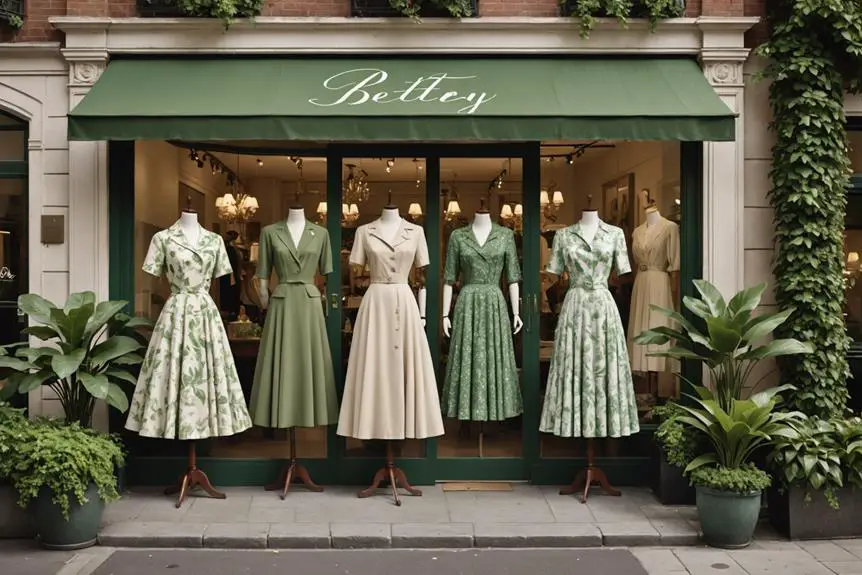
In the 1950s, Betty Barclay emerged as a brand name crafted by Jonathan Logan, a prominent American clothing manufacturer known for mid-priced ready-to-wear dresses. This brand quickly gained recognition for its stylish offerings, capturing the essence of contemporary fashion. In 1955, Max Berk acquired the German license for Betty Barclay, a pivotal move that allowed for European production and solidified the brand's foothold in the market. Berk, shifting from running a laundry factory to focusing on women's clothing, capitalized on his prior experience to elevate the brand. The brand's early collections not only emphasized feminine designs but also included budget-friendly options that appealed to a diverse consumer base, reflecting the brand history and product line expansion. Under his leadership, Betty Barclay flourished in the European fashion scene, appealing to a demographic seeking elegance and affordability. By 1972, Betty Barclay's success led to the acquisition of worldwide trademark rights, paving the way for global expansion. This strategic growth not only diversified the brand's offerings but also cemented its place within the competitive landscape of women's fashion. Consequently, the origins of Betty Barclay reflect a blend of American ingenuity and German craftsmanship, setting the stage for its lasting legacy.
Key Milestones in Development
Betty Barclay's journey through the fashion landscape is marked by several key milestones that have shaped its identity and growth. Founded in 1955, the brand took its first significant step by acquiring the German license from the Jonathan Logan Group, paving the way for its entry into the European fashion market. Here are some pivotal moments in Betty Barclay's development:
- 1972: The brand secured worldwide trademark rights, solidifying its presence in Europe.
- 1960s: The introduction of the Vera Mont subsidiary expanded Betty Barclay's offerings to include formal evening wear, demonstrating its adaptability to market demands.
- Late 1960s: The addition of the Gil Bret brand diversified the clothing lines, incorporating practical outdoor fashion, which appealed to a broader audience.
- 2002: The opening of the first Betty Barclay retail store marked a significant enhancement in visibility, allowing customers direct access to the brand's evolving collections.
These milestones collectively illustrate how Betty Barclay has strategically navigated the fashion landscape, ensuring its relevance and appeal through diverse offerings and strategic expansions.
Brand Expansion and Growth
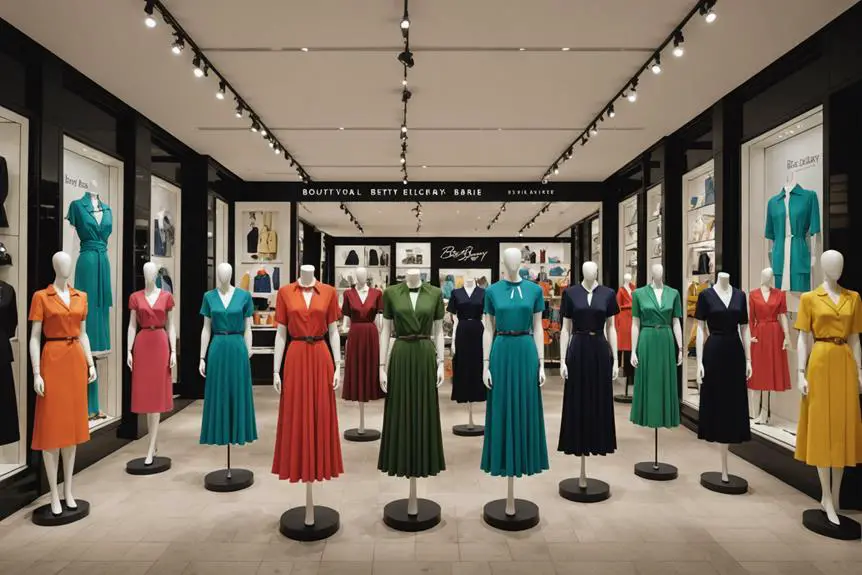
Following the brand's key milestones in development, the expansion and growth of Betty Barclay reflect a strategic approach to evolving within the competitive fashion market. The journey began in 1955 when Max Berk acquired the German license for European production, laying the groundwork for the Betty Barclay brand's prominence. By 1972, the brand had not only established itself in the European market but also secured worldwide trademark rights, enabling global distribution.
In the 1960s, the introduction of the Vera Mont subsidiary marked a diversification of the product line, emphasizing formal and evening wear. This move positioned Betty Barclay as a versatile player in the fashion industry. The 1970s further showcased brand expansion, with the introduction of accessories and fragrances, which broadened its appeal and attracted a wider audience.
A significant milestone occurred in 2002 with the opening of the first standalone Betty Barclay store, enhancing retail presence and fostering direct consumer connections. Each step in this journey illustrates how the Betty Barclay brand has skillfully navigated market shifts, continually adapting its line of ready-to-wear offerings and solidifying its status within the competitive landscape.
Logo Evolution Through the Years
The evolution of the Betty Barclay logo serves as a fascinating lens through which to understand the brand's identity and the changing dynamics of design trends over the decades. Initially introduced in the 1950s, the logo showcased ornate cursive script with closely connected letters and varying line thickness. This style epitomized mid-20th-century branding, reflecting a handcrafted aesthetic that resonated with the era's vintage clothing.
As we moved into the 2000s, the logo underwent a significant transformation. The streamlined version featured uniform thickness, aligning with minimalism's rise in design philosophy. This shift not only modernized the Betty Barclay identity but also mirrored broader design trends that prioritized clarity and simplicity.
Here are key aspects of this logo evolution:
- 1950s: Ornate cursive, hand-drawn techniques.
- 1970s: Subtle modifications, maintaining elegance.
- 1990s: Introduction of bolder designs, reflecting consumer shifts.
- 2000s: Simplified aesthetic, embracing minimalism.
Each iteration not only highlights the brand's evolving identity but also aids in dating and identifying vintage Betty Barclay garments, enriching the brand's historical narrative.
Vintage Tag Identification
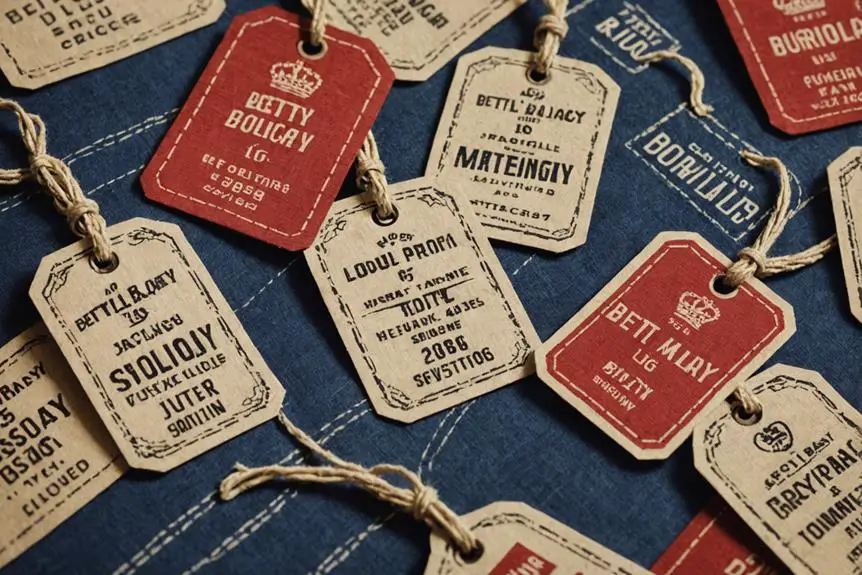
Identifying vintage Betty Barclay tags is essential for collectors and fashion enthusiasts who want to trace the brand's style evolution. Each decade of tag design reflects the fashion trends and aesthetic values prevalent at the time, providing a rich context for understanding the company's history.
In the 1950s, expect a tag with a white or off-white background and elegant red cursive lettering, epitomizing the classic design of that era. Moving into the 1960s, the tags evolved, adopting a cream or white background with refined cursive styles, often framed by borders. The 1970s brought bolder colors and thicker fonts, introducing patterns and logos that captured the era's vibrant spirit.
By the 1980s, tags diversified in color and font, with some showcasing collection names and metallic details, enhancing their visual appeal. Finally, the modern tags from the 1990s to 2000s embraced a minimalist approach, characterized by clean, bold text in darker colors, reflecting a sleek, contemporary aesthetic in fashion.
Understanding these vintage tags not only helps you appreciate the artistry in Betty Barclay dresses but also places you within the broader narrative of fashion history.
Distinctive Product Offerings
Exploring the distinctive product offerings of Betty Barclay reveals a brand that skillfully balances elegance and practicality in women's fashion. As a mid-priced line of ready-to-wear, Betty Barclay emphasizes quality textiles and craftsmanship, drawing inspiration from the legacy of German textile maker Max Berk.
The brand's offerings can be categorized into several key collections:
- Ready-to-Wear Dresses: Feminine clothing designed for everyday elegance, showcasing beautiful patterns and sophisticated color palettes, including shades like petrol blue.
- Vera Mont Collection: Specializes in formal evening, cocktail, and bridal fashions, elevating special occasions with timeless designs.
- Gil Bret Line: Established in 1968, this collection complements Betty Barclay with practical outdoor fashion, focusing on stylish coats and jackets.
- Vintage Betty: A nod to past styles, integrating classic aesthetics while avoiding the painful fashion missteps of the 1970s.
This thoughtful approach not only caters to the modern woman's needs but also reinforces Betty Barclay's commitment to timeless elegance, making it a standout in the world of contemporary fashion.
Cultural Influence and Impact

Reflecting the evolving societal norms of mid-20th century fashion, Betty Barclay emerged as a pivotal brand that offered stylish yet affordable clothing for women. Founded by German textile maker Max Berk, the brand specifically designed dresses for the European market, capturing the essence of feminine silhouettes and playful prints. The 1950s and 60s collections, featuring iconic gingham patterns, not only defined an era but also set the stage for future designers.
Betty Barclay's cultural impact extends beyond its time, as contemporary fashion designers frequently draw inspiration from its vintage collections. This nostalgic appeal fosters a tangible connection to fashion history, highlighting the cultural shifts of the period. As you explore the brand's legacy, you'll notice how its emphasis on quality craftsmanship and elegant designs continues to resonate in today's fashion industry.
| Era | Key Features | Cultural Significance |
|---|---|---|
| 1950s | Feminine silhouettes | Reflection of post-war optimism |
| 1960s | Playful prints (e.g., gingham) | Empowerment in women's fashion |
| Vintage Appeal | Nostalgic collections | Connection to fashion history |
| Contemporary | Influence on modern designs | Enduring relevance in trends |
| Legacy | Quality craftsmanship | Foundation for future fashion |
Current Brand Positioning
Betty Barclay stands as a significant player in the European fashion landscape, commanding approximately 60% of its total sales revenue through its main brand. As a leading German textile maker, Betty Barclay has established itself as one of the largest clothing manufacturers, catering primarily to the women's fashion market.
To understand its current brand positioning, consider the following aspects:
- Retail Presence: With over 50 brick-and-mortar locations in Germany, the brand emphasizes physical retail, especially after closing online shops in certain countries.
- Diverse Offerings: The introduction of sub-brands like Vera Mont for formal wear and Gil Bret for outdoor fashion allows Betty Barclay to reach various customer segments effectively.
- Employment: Employing over 1,250 individuals globally, the brand showcases its commitment to fostering a robust workforce while catering to women's fashion needs.
- Sports Sponsorship: Active participation in initiatives like the Betty Barclay Ladies Golf Tour enhances brand visibility and aligns the brand with women's sports.
Under Max Berk's leadership, Betty Barclay continues to adapt and grow, solidifying its status in the competitive fashion arena.
Community Engagement Initiatives
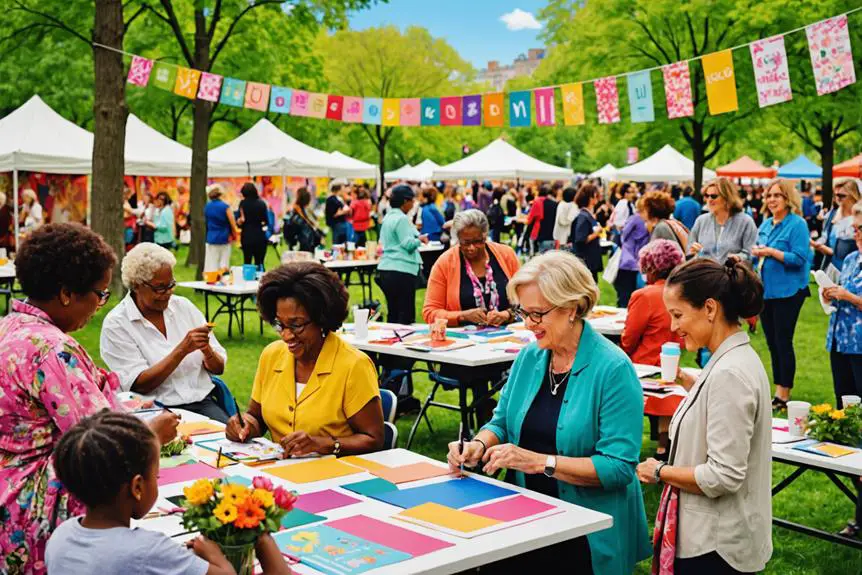
Through various community engagement initiatives, Betty Barclay fosters a strong connection with its audience while promoting a shared passion for fashion. The brand actively supports its community through sports sponsorships, including outfitting the German women's Olympic team and backing regional golf and tennis tournaments since 1999. This involvement not only enhances brand visibility but also cultivates community spirit.
Additionally, Betty Barclay connects with vintage clothing enthusiasts by encouraging them to share experiences and insights. The brand invites community members to participate in discussions on blogs and social media, fostering a sense of belonging. Here's a snapshot of these initiatives:
| Initiative Type | Description | Community Impact |
|---|---|---|
| Sports Sponsorships | Outfitting the German women's Olympic team | Promotes sports and brand visibility |
| Vintage Tag Submissions | Users submit tags for vintage clothing identification | Enhances knowledge sharing among collectors |
| Social Media Engagement | Discussions on blogs and social platforms | Builds community connections and storytelling |
| Educational Content | Vintage clothing care and maintenance guidelines | Informs and supports vintage clothing lovers |
| Vintage Experience Sharing | Collectors share their stories and finds | Creates a vibrant community of fashion lovers |
These initiatives underscore Betty Barclay's commitment to community engagement.
Future Directions and Sustainability
As the fashion industry increasingly shifts towards sustainability, Betty Barclay is making considerable strides in aligning its practices with eco-conscious values. The brand recognizes the urgent need for sustainable practices and has set ambitious goals to reshape its production methods. Here are key initiatives you should be aware of:
- Eco-friendly Materials: Betty Barclay is committed to sourcing eco-friendly materials, ensuring that each garment reflects a responsible approach to fashion.
- Recycled Fabrics: The brand actively explores the use of recycled fabrics, addressing the demand for sustainable options while minimizing waste.
- Carbon Footprint Reduction: By implementing energy-efficient practices in manufacturing and logistics, Betty Barclay aims to considerably reduce its carbon footprint.
- Transparency: The company prioritizes transparency in its sourcing and production processes, providing customers with insights into the environmental impact of their purchases.
As you engage with Betty Barclay, you'll notice their dedication to enhancing customer awareness around sustainability initiatives. This commitment not only fosters responsible consumer choices but also contributes to a broader cultural shift towards sustainability, making Betty Barclay a leader in the eco-conscious fashion movement.
Frequently Asked Questions
Is Betty Barclay a Designer Brand?
No, Betty Barclay isn't a designer brand in the luxury sense. It focuses on mid-priced, ready-to-wear clothing, offering stylish options for women while emphasizing accessibility and quality, distinguishing it from high-end designer labels.
Which Country Brand Is Betty Barclay?
Betty Barclay's a German brand, originating from Nussloch. Its focus on women's fashion, particularly ready-to-wear dresses, showcases its commitment to quality and contemporary style, appealing to both European and American markets.
What Is the History of Butte Knit?
Butte Knit emerged in the 1960s, focusing on stylish knitwear for women. By the 1970s, it expanded to include a variety of clothing, embracing vibrant colors and playful prints to attract a wider audience.
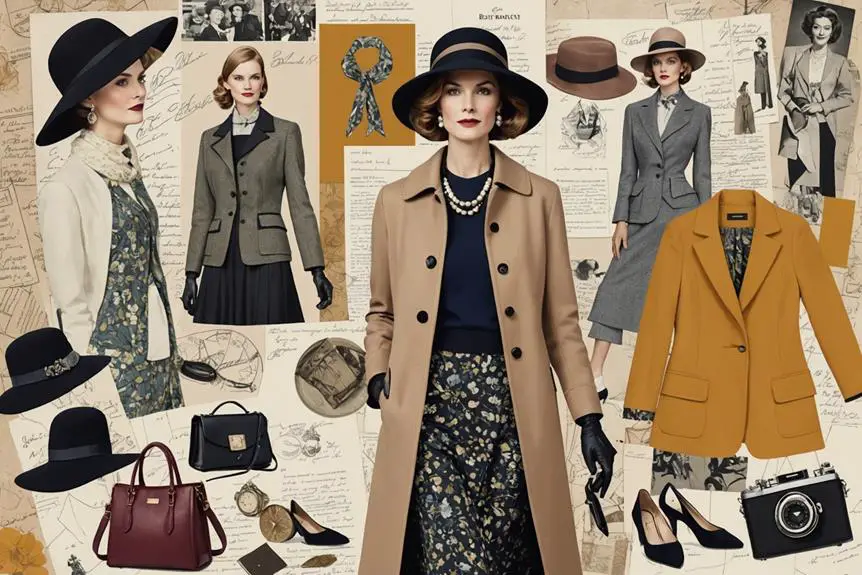




There’s noticeably a bundle to know about this. I assume you made sure nice factors in features also.